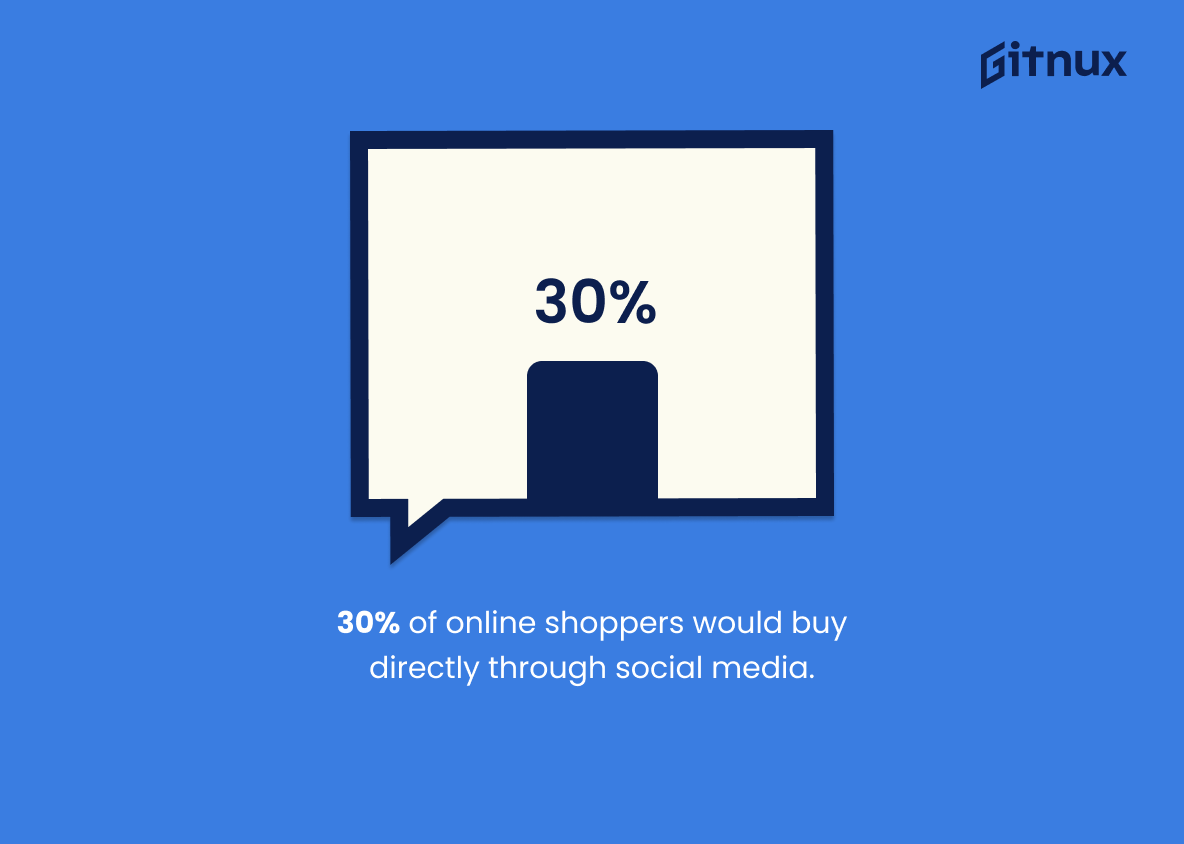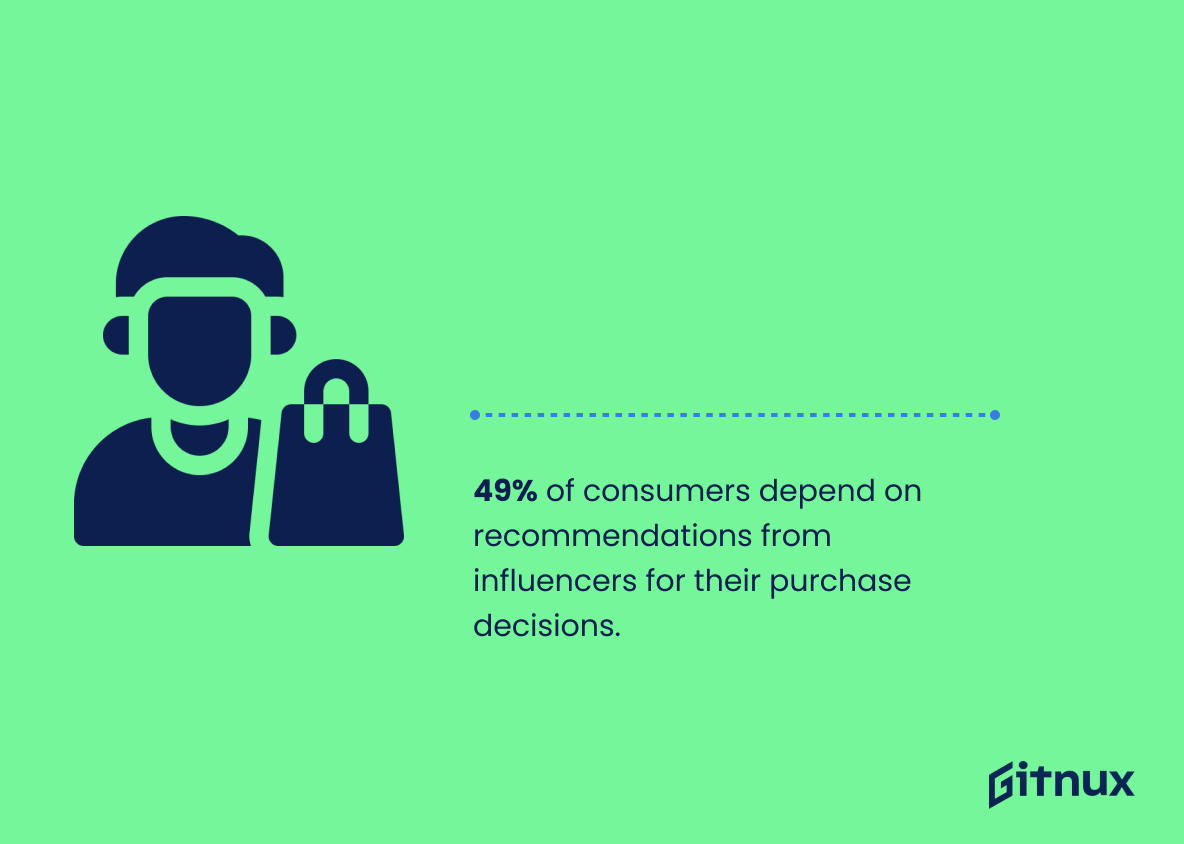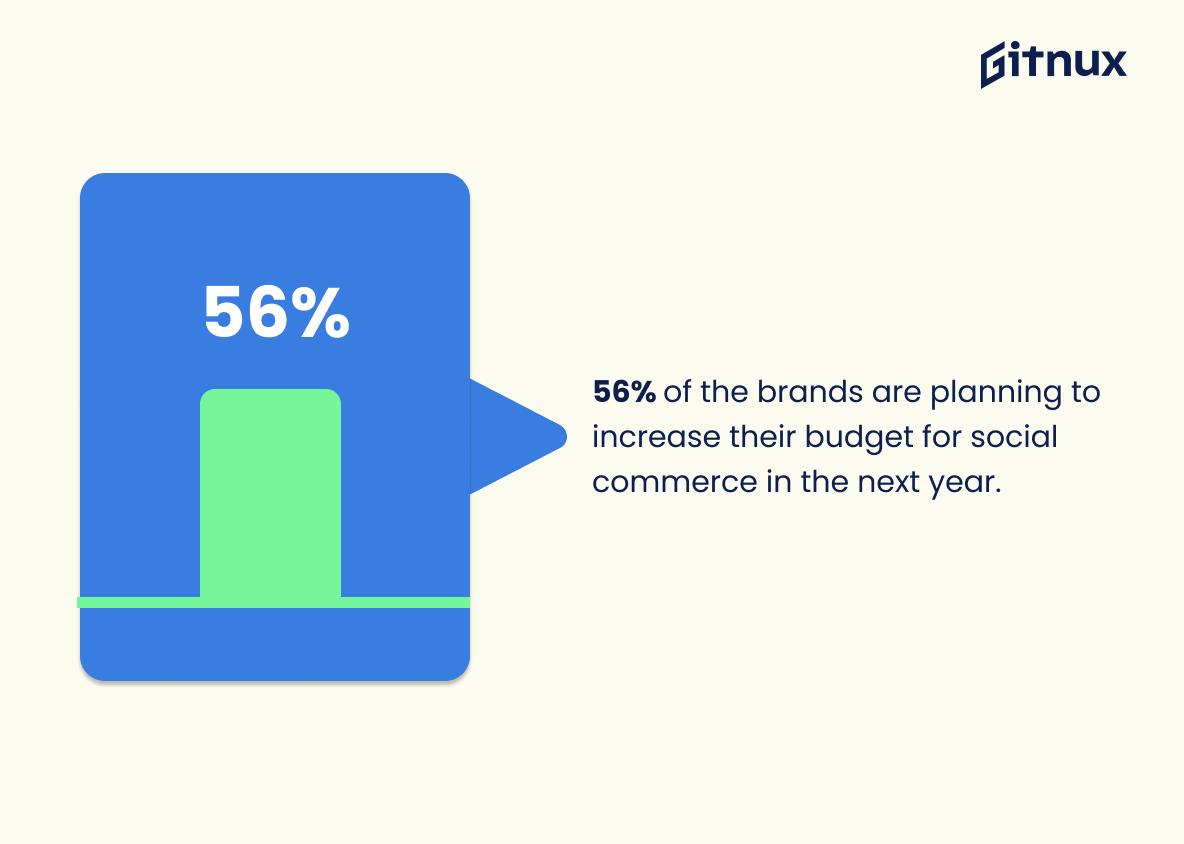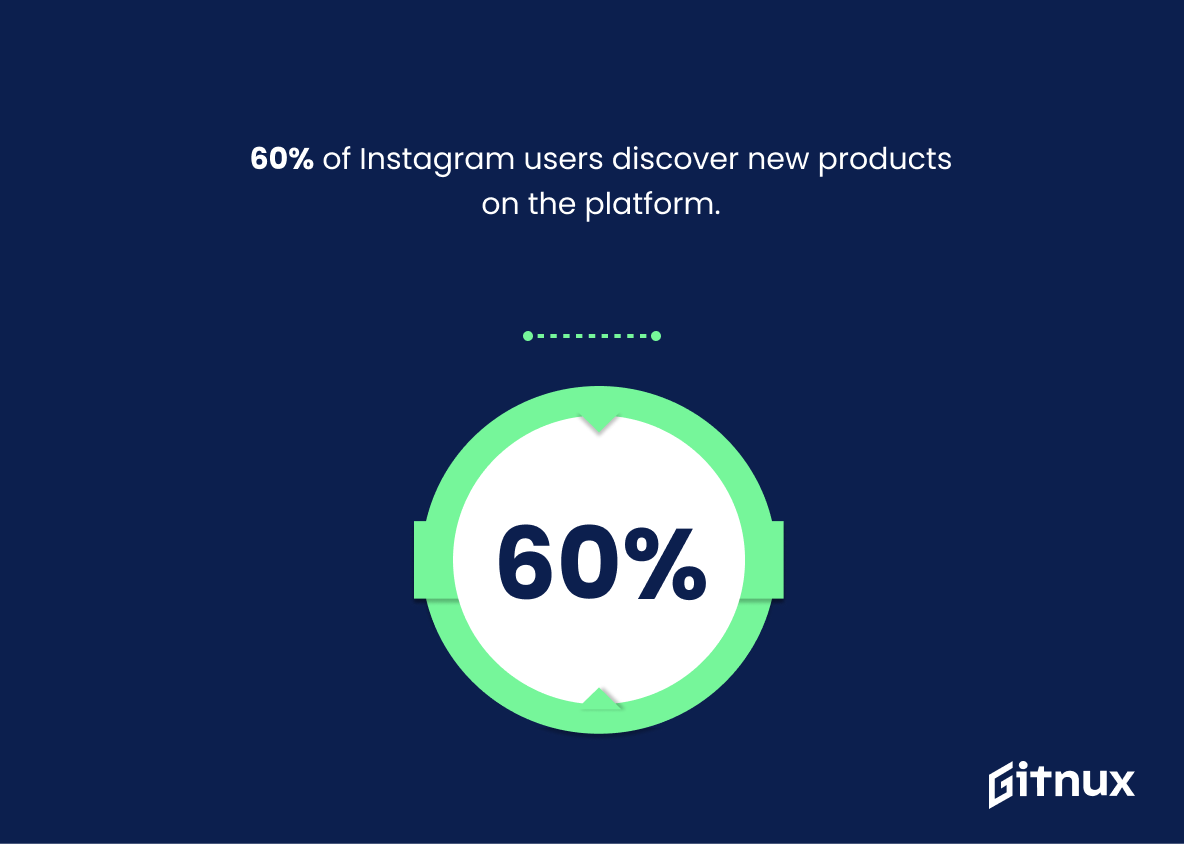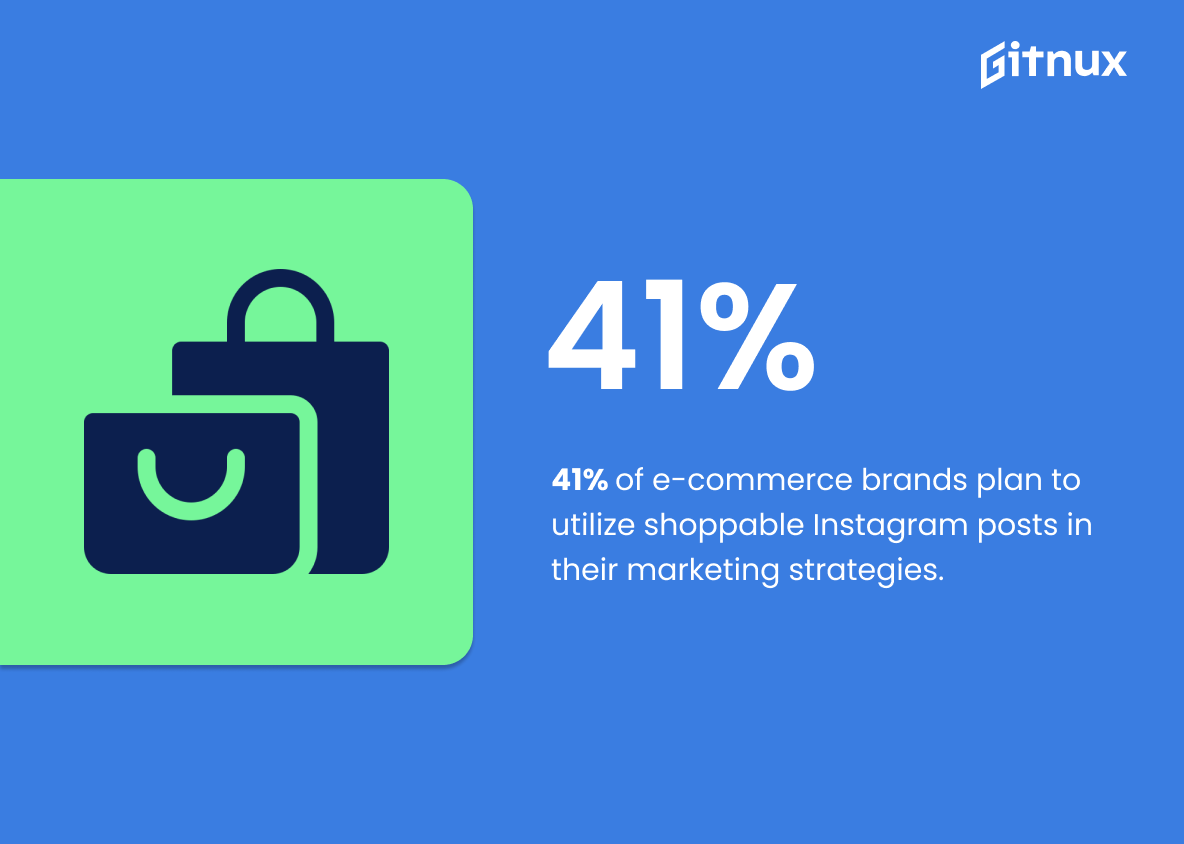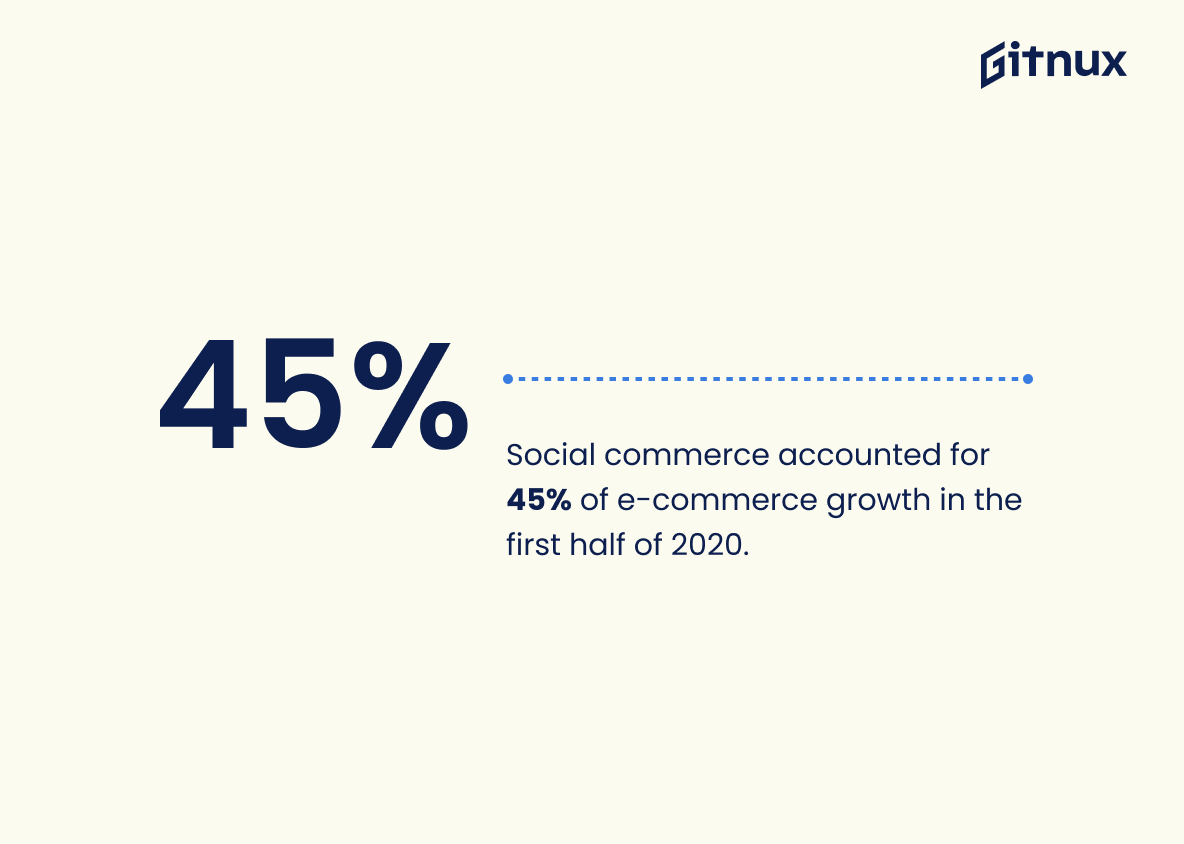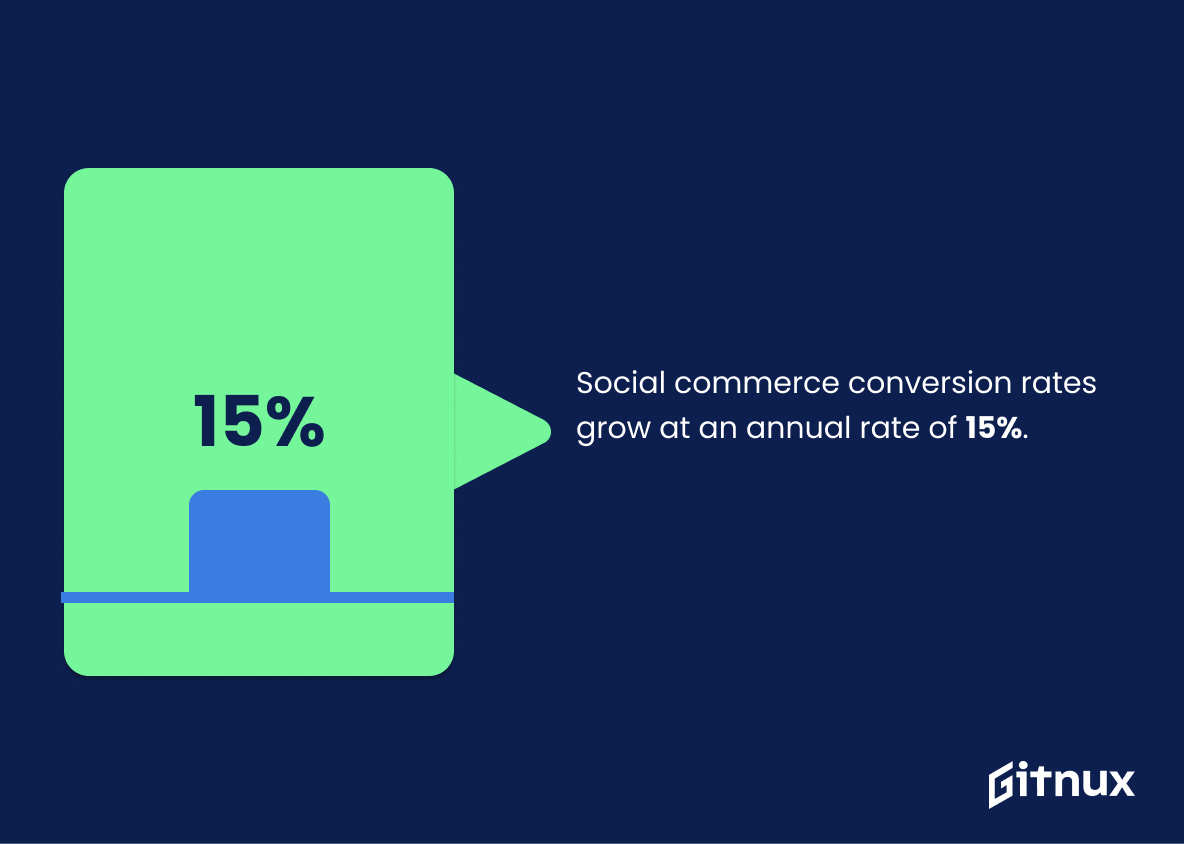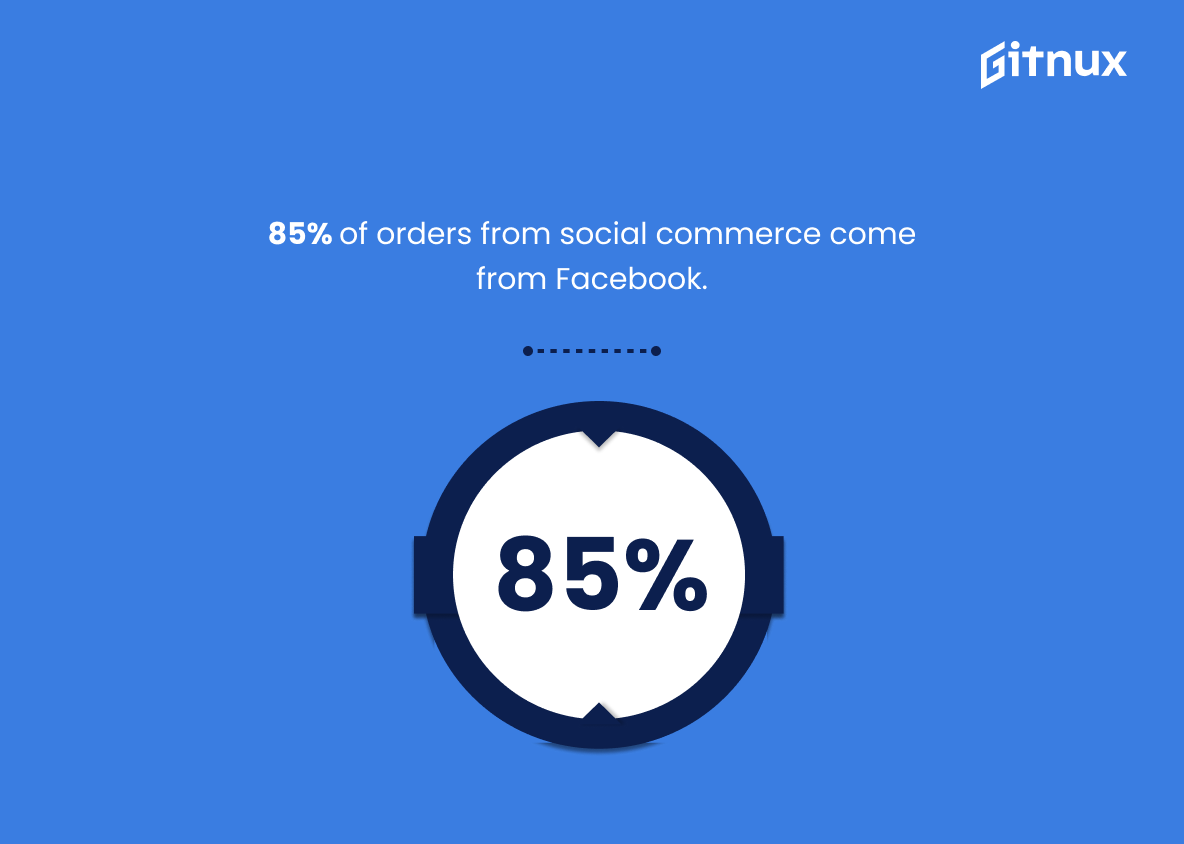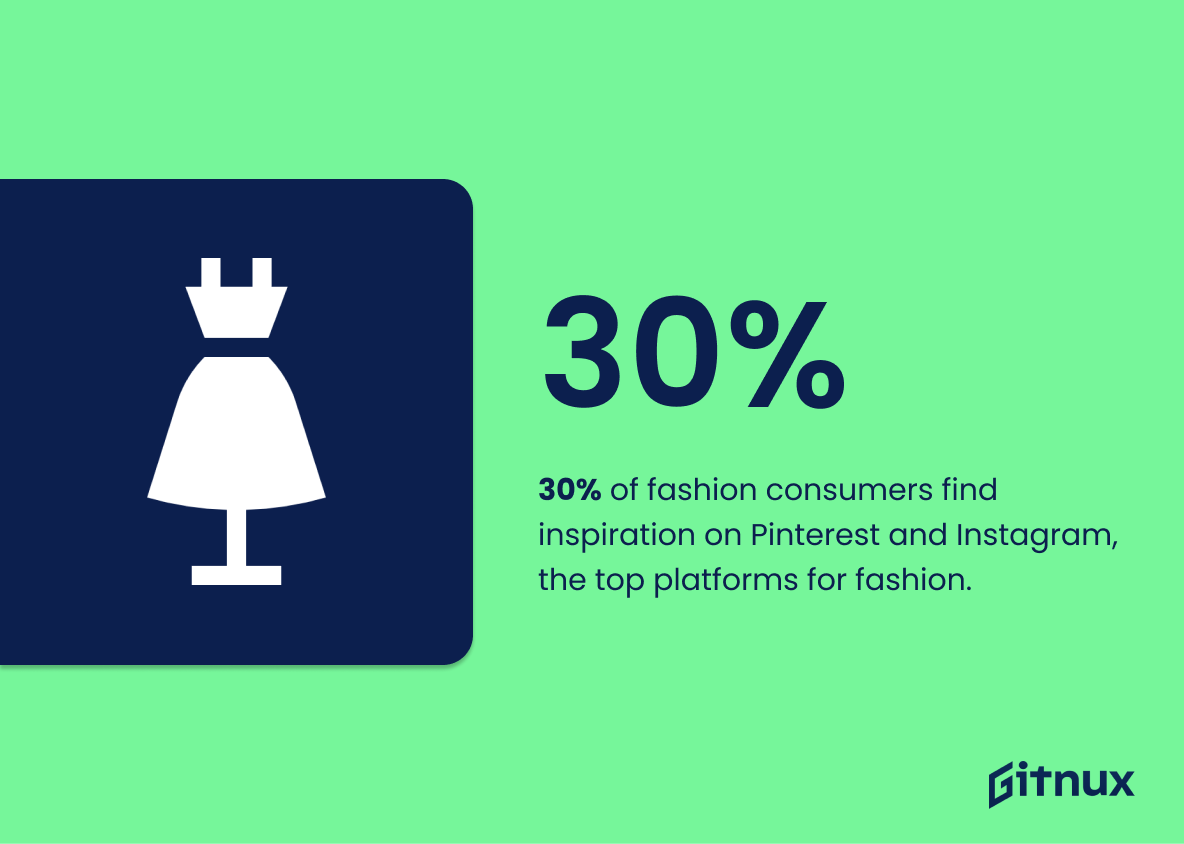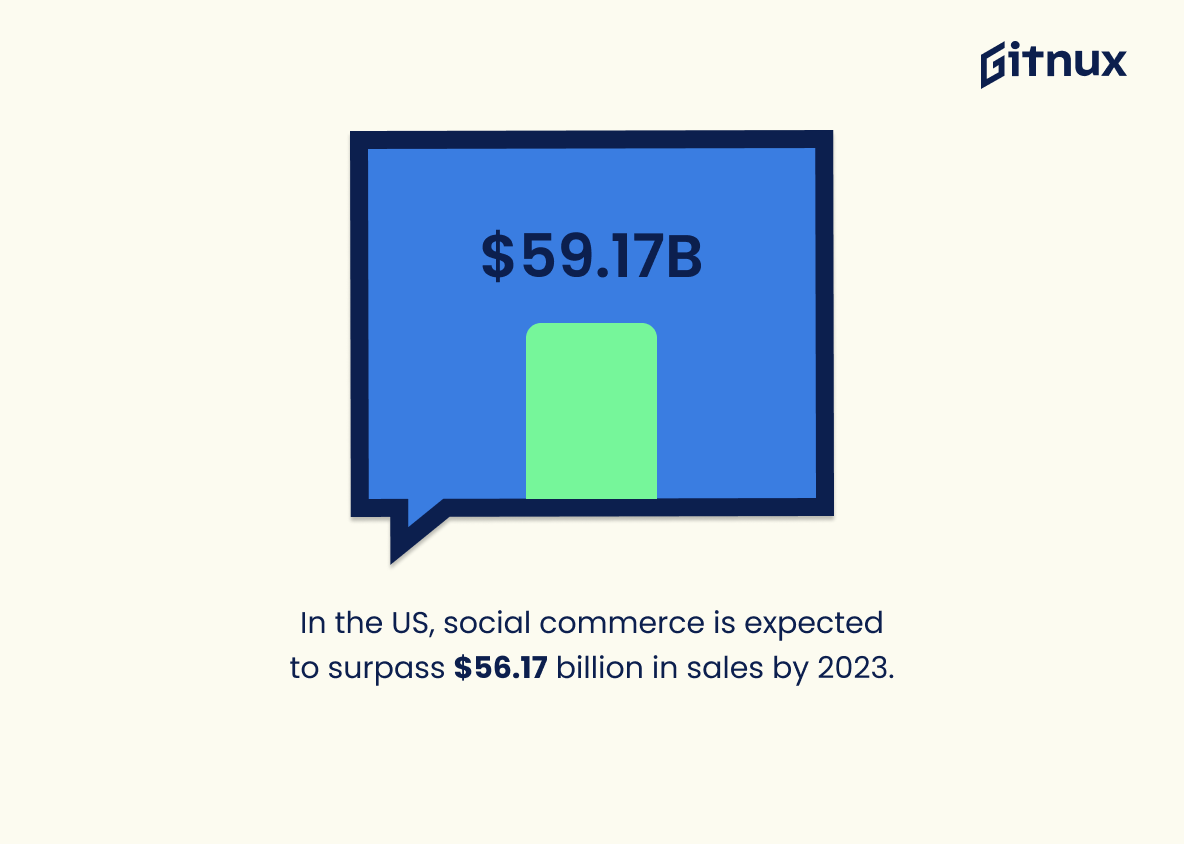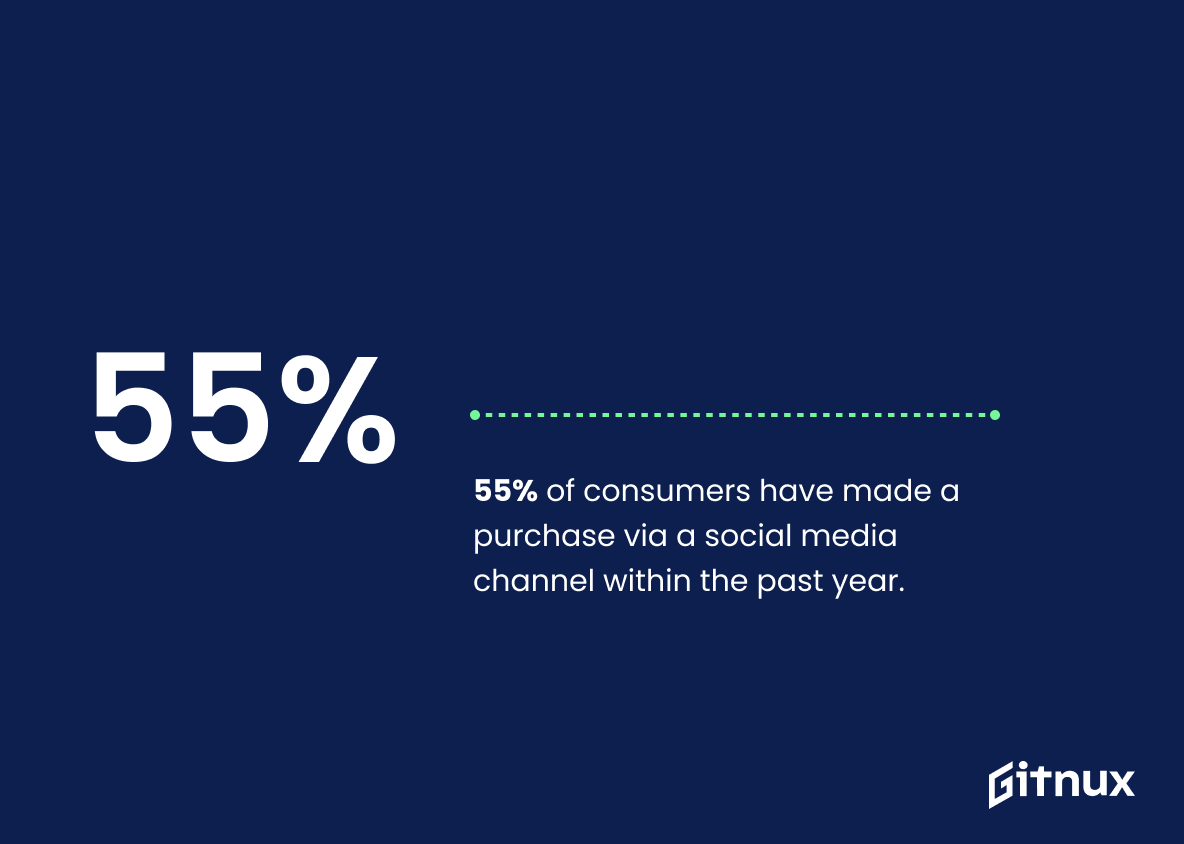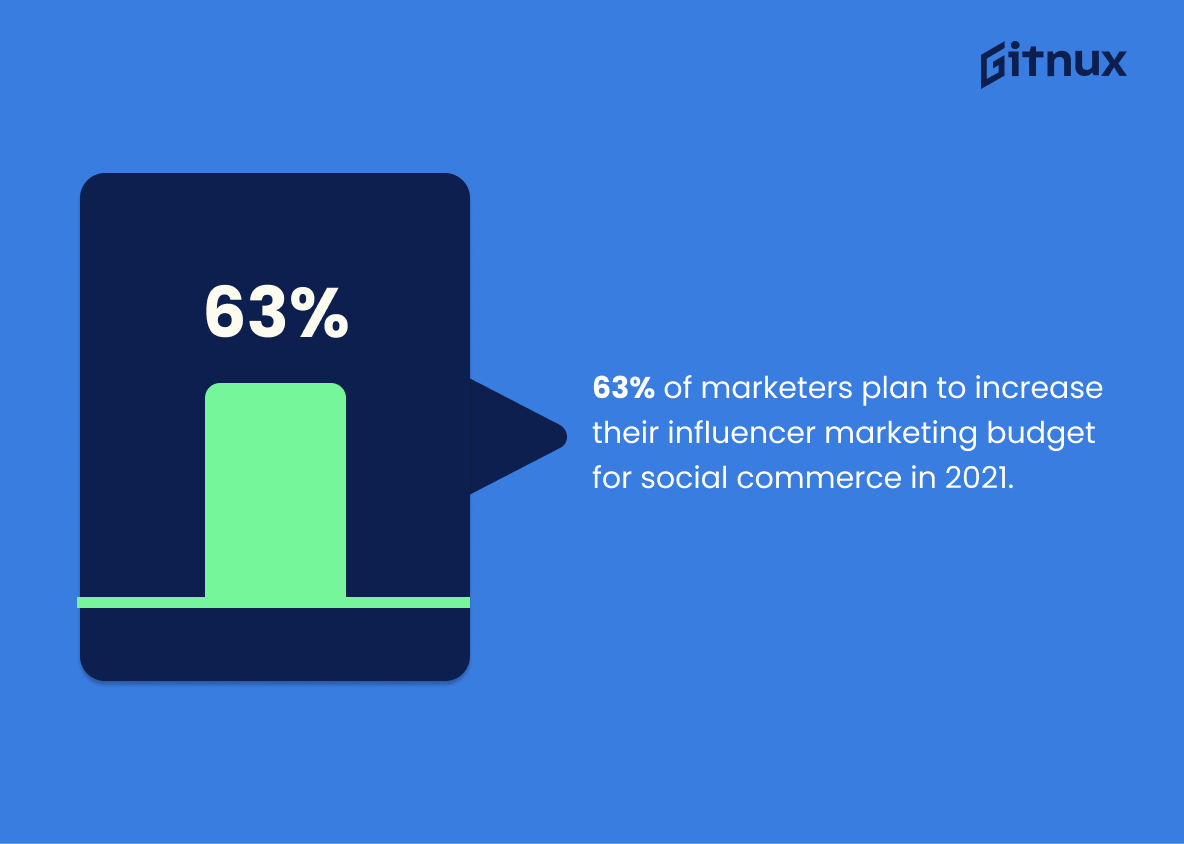Social commerce is a rapidly growing trend in the e-commerce industry, with sales predicted to reach $36.62 billion in 2021 and 17% of total US e-commerce sales by 2025. Consumers are increasingly turning to social media platforms for product research and purchase decisions, with 84% using it for research purposes and 71% more likely to buy products based on referrals from these channels. Social media buying has also become popular among shoppers, as 30% say they would be likely to make purchases directly through a platform like Facebook or Instagram.
In addition, influencers have been playing an important role in driving social commerce growth – 49% of consumers depend on their recommendations when making purchasing decisions while 56% of brands plan to increase their budget for this type of marketing strategy next year. Among all major social networks, Facebook remains the leader when it comes to retail inspiration (78%), followed by Instagram (60%) where 41 %of marketers use shoppable posts as part of their strategies; Pinterest (70%); and TikTok which saw its share grow significantly during 2020 due mainly because younger generations prefer this channel over others .
The impact that social commerce had last year was remarkable: 45 %of global e-commerce growth came from conversions made via these channels while digital native brands achieved 40 %higher revenue than traditional retailers thanks largely due increased engagement levels across multiple platforms such as Twitter , Snapchat , YouTube etc.. In China alone ,social commerce reached around 200 billion dollars representing 10 percent out off all online retail sales .
Overall ,the statistics show us how powerful can be the combination between shopping & sharing experiences within our favorite networks so if you’re looking into expanding your business opportunities then now is definitely time consider investing some resources into developing effective campaigns that will help you take advantage out off what we call “social selling”
This statistic is a powerful indicator of the potential of social commerce in the US. It shows that the market is growing rapidly, with a 35.8% increase from 2020, and is expected to reach an impressive $36.62 billion in 2021. This is a clear sign that social commerce is becoming an increasingly important part of the US economy, and is a trend that businesses should be paying attention to.
By 2025, social commerce is expected to represent 17% of e-commerce sales in the United States.
This statistic is a powerful indicator of the potential of social commerce in the United States. It shows that, in the near future, social commerce is expected to become a major player in the e-commerce market, accounting for a significant portion of sales. This is an important point to consider when discussing the current and future state of social commerce, as it demonstrates the potential for growth and success in this sector.
Social Commerce Statistics Overview
71% of people are more likely to purchase products based on social media referrals.
This statistic is a powerful indicator of the influence of social media on consumer behavior. It shows that the majority of people are more likely to purchase products based on referrals from social media, which is a testament to the power of social media in driving sales. This statistic is important for businesses to consider when creating their social commerce strategies, as it demonstrates the potential for social media to be a powerful tool for driving sales.
30% of online shoppers say they would be likely to make a purchase directly through a social media platform.
This statistic is a telling indication of the potential of social media as a platform for commerce. It suggests that a significant portion of online shoppers are open to the idea of making purchases directly through social media, indicating that social commerce is a viable option for businesses to explore.
49% of consumers depend on recommendations from influencers for their purchase decisions.
This statistic is a powerful indicator of the influence of social commerce on consumer behavior. It shows that a significant portion of consumers are relying on influencers to make their purchase decisions, demonstrating the power of social media in driving sales. This highlights the importance of social commerce for businesses, as it can be a powerful tool for reaching potential customers and increasing sales.
56% of the brands are planning to increase their budget for social commerce in the next year.
This statistic is a clear indication that social commerce is becoming increasingly important to brands. It shows that more and more companies are recognizing the potential of social commerce and are willing to invest in it. This is a strong signal that social commerce is here to stay and that it is becoming an increasingly important part of the marketing mix.
60% of Instagram users discover new products on the platform.
This statistic is a powerful indicator of the potential of Instagram as a platform for social commerce. It shows that a large portion of Instagram users are actively seeking out new products, making it an ideal platform for businesses to showcase their offerings and reach a wide audience. This statistic is especially relevant for blog posts about social commerce statistics, as it demonstrates the potential of Instagram as a tool for businesses to reach and engage with customers.
41% of e-commerce brands plan to utilize shoppable Instagram posts in their marketing strategies.
This statistic is a testament to the power of social commerce. It shows that a large number of e-commerce brands recognize the potential of shoppable Instagram posts to drive sales and are actively investing in this strategy. This highlights the importance of social commerce in the modern marketing landscape and the need for businesses to stay up-to-date with the latest trends.
70% of shopping enthusiasts turn to Pinterest for shopping advice and new products.
This statistic is a powerful indicator of the influence of Pinterest in the realm of social commerce. It shows that the platform is a major source of advice and product discovery for shoppers, and that it has become an integral part of the shopping experience. This is an important point to consider when discussing the impact of social commerce on the retail industry.
Social commerce accounted for 45% of e-commerce growth in the first half of 2020.
This statistic is a testament to the power of social commerce in driving e-commerce growth. It highlights the importance of leveraging social media platforms to reach customers and increase sales. It also shows that social commerce is a viable option for businesses looking to expand their online presence and capitalize on the growing trend of online shopping.
Social commerce conversion rates grow at an annual rate of 15%.
This statistic is a testament to the power of social commerce, showing that it is a rapidly growing industry. It indicates that businesses are increasingly turning to social commerce as a way to reach customers and increase their sales. This statistic is a valuable insight for anyone looking to capitalize on the potential of social commerce, as it shows that the industry is growing at a rapid rate and is likely to continue to do so in the future.
85% of orders from social commerce come from Facebook.
This statistic is a powerful indicator of the impact that Facebook has had on the social commerce industry. It shows that Facebook is a major player in the space, and that it is a key platform for businesses to reach their customers. This statistic is important for businesses to understand, as it can help them to better target their marketing efforts and maximize their return on investment.
Pinterest and Instagram are the most influential platforms for fashion, with 68% of fashion consumers finding inspiration there.
This statistic is a powerful reminder of the immense influence that Pinterest and Instagram have on fashion consumers. It highlights the importance of these two platforms for fashion brands looking to reach their target audience and capitalize on the potential of social commerce. With 68% of fashion consumers finding inspiration on these platforms, it is clear that they are essential for any fashion business looking to stay ahead of the competition.
In the US, social commerce is expected to surpass $56.17 billion in sales by 2023.
This statistic is a powerful indicator of the potential of social commerce in the US. It shows that the market is growing rapidly and is expected to reach a staggering $56.17 billion in sales by 2023. This is a clear sign that businesses should take advantage of this trend and start investing in social commerce to capitalize on the potential of this lucrative market.
55% of consumers have made a purchase via a social media channel within the past year.
This statistic is a powerful indicator of the growing influence of social media on consumer purchasing decisions. It shows that a majority of consumers are now turning to social media channels to make purchases, demonstrating the potential of social commerce as a viable sales platform. This statistic is a valuable piece of information for anyone looking to understand the current state of social commerce and its potential for businesses.
63% of marketers plan to increase their influencer marketing budget for social commerce in 2021.
This statistic is a clear indication that influencer marketing is becoming an increasingly important part of social commerce. It shows that marketers are recognizing the potential of influencers to drive sales and are investing more resources into this area. This is an important trend to be aware of, as it could have a significant impact on the success of social commerce in 2021.
Social commerce sales in China reached about $200 billion in 2020, accounting for around 10% of total online retail sales.
This statistic is a testament to the immense growth of social commerce in China, highlighting the potential of this new form of retail. It demonstrates that social commerce is no longer a niche market, but a major player in the online retail space. This statistic is a clear indication that social commerce is here to stay and will continue to be a major force in the retail industry.
Conclusion
Social commerce is a rapidly growing industry, with sales in the US predicted to reach $36.62 billion in 2021 and expected to represent 17% of e-commerce sales by 2025. Consumers are increasingly using social media platforms for product research and referrals, with 84% researching products or services on social media and 71% more likely to purchase based on recommendations from influencers. Social commerce conversion rates have been steadily increasing at an annual rate of 15%, while digital native brands have seen 40% higher revenue share from conversions than traditional retailers. Facebook remains the leading platform for social commerce, followed closely by Instagram and Pinterest; 85%, 60%, 70%, respectively, making purchases through these channels within the past year. In China alone, it’s estimated that 2020 saw around $200 billion worth of total online retail sales coming directly from social commerce – 10 times greater than what was projected for the US this same year. With such impressive growth across all markets worldwide over recent years – as well as plans among marketers to increase their budget allocations towards influencer marketing strategies – there’s no doubt that we can expect even further expansion into this sector moving forward into 2021 and beyond.
References
0. – https://www.businessinsider.com
1. – https://www.mckinsey.com
2. – https://www.forbes.com
3. – https://www.business.pinterest.com
4. – https://www.digitalmarketinginstitute.com
5. – https://www.buffer.com
6. – https://www.absolutewebservices.com
7. – https://www.emarketer.com
8. – https://www.entrepreneur.com
9. – https://www.bigcommerce.com
10. – https://www.smartinsights.com
11. – https://www.globalwebindex.com
12. – https://www.merkleinc.com
13. – https://www.blog.hootsuite.com
14. – https://www.shopify.com
15. – https://www.influencermarketinghub.com
ZipDo, cited June 2023: Social Commerce Statistics

